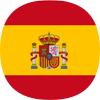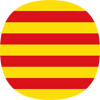
Séminaire public
Slowing Down to Run Faster (2-day online seminar)
avec Edward Yu
Cette page n’a pas été encore traduite en français, c'est pourquoi certaines parties du texte apparaissent en anglais. Vous pouvez sélectionner une autre langue dans la partie supérieure droite de la page.
Slowing Down to Run Faster: Newton’s 3rd Law of Motion (part 1 of a 3-part series for running)
For Every Action There is an Equal and Opposite Reaction
Because our eyes are oriented to the front of our body (one reason it’s called the “front” of our body), we have a tendency to be less aware, not only of our backside, but any movement that crosses behind the coronal plane and consequently out of our field of vision. Thus, when walking or running, we often have little inkling of not only how we are extending our neck, back, and hips, but the trajectory of either foot, knee, shoulder, elbow, or hand as it trails behind us. Yet, every movement we make both in our back and in the parts that travel behind it plays as important a role in determining the power and efficiency of our stride as those we make in our front and within our field of vision.
General Focus
In this workshop we will begin to sense how the trajectory of the trailing foot in either walking or running determines in large part, the trajectory of the leading foot, and how both are inextricably linked to the articulation of each and every vertebra in the spine. More specifically, we will begin to sense how particular ways of simultaneously extending, rotating and laterally bending our spine can, when coordinated with the movement of our knees and hips, play a crucial role in generating more power in our gait and stride. In the process we will discover how even minute adjustments in the way we configure our spine can, at any given moment, lead to fundamental changes in the way we stand, walk and run.
Why Participate in this Workshop?
Unlike conventional running approaches, all of which rely heavily on imitation, correction, rules, tips, and drills in an attempt to get people to attain a rigidly defined ideal, we will be exploring in a manner that allows us to come closer to whatever ideal more closely fits our own individual physical characteristics. In this manner, we will tap directly into the vast potential of the nervous system, taking advantage of its extraordinary capacity, when given the choice, to select optimal sensorimotor patterns out of the virtually infinite number available at any given moment.
Topics for discussion during the workshop
- Biomechanics and its limitations
- Conventional approaches to running: possible benefits and pitfalls
- Imitation and correction: how effective are they?
- How useful are tips?
- What is ideal form?
- Degrees of freedom and the complexity of human movement
- The general manner by which all humans learn to run
- Human movement in contradistinction to machine movement
- Humans as biological organisms rather than mechanical objects
This workshop is geared for anyone interested in running, from weekend warriors to world class athletes.
Edward Yu is a rehab specialist and teacher specializing in running, martial arts, strength training, and injury prevention. He has taught in various locales in Europe, China, and the U.S., and has worked with a wide variety of people including professional athletes and dancers. His publications include: Slowing Down Faster: A Sense-able Approach to Movement (North Atlantic, 2020); The Mass Psychology of Fittism: Fitness, Evolution, and the First Two Laws of Thermodynamics (Undocumented Worker Press, 2015); and The Art of Slowing Down: A Sense-able Approach to Running Faster (Panenthea, 2010).
Please note: Given the difficulty of mastering any skill, including one as complex as running, the lessons covered in this workshop should be seen as an introduction to improving your stride rather than as a complete guide to running with optimal efficiency. For regardless the subject, not only does achieving mastery require enormous space for wonder and exploration, and therefore a tremendous amount of patience and time, but in virtually all cases, it involves a good deal more detailed guidance, personal instruction, and trials (with “errors”) than any single workshop can offer. That said, the experience should give you a running start (pun intended) toward deeper learning and lasting improvement.
Crédits photos
- Photo – © Emma Simpson on Unsplash









